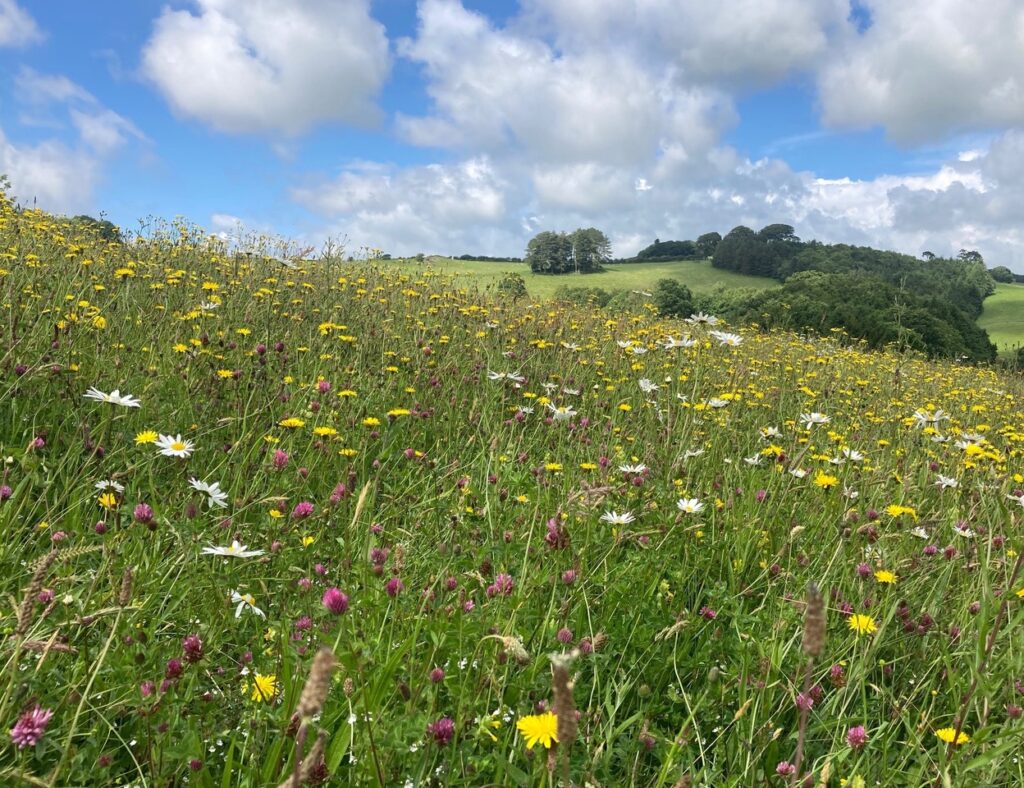Hermitage Field is now in its fourth year since we began to restore it as a wildflower hay meadow. In this post, Head of Trustees Erica Sarney describes some of the key changes we’ve seen over the last year.
“The meadow has performed very well this year and exceeded expectations for such a young meadow. We had not anticipated that Common-spotted Orchids, for instance, would appear so quickly in two distinct areas.
“We had been doubtful that Eyebright would thrive on the site, but it has spread well, along with an abundance of Yellow Rattle. Along some of the footpath areas we also sowed seeds of Red Bartsia (like Rattle and Eyebright, a hemi-parasite of grasses, but flowering later in the season). The Bartsia provides a later nectar source for bumblebees, and Common Carder Bees in particular.
“We have also experimented with planting a few plugs of Betony, which grows locally on a couple of sites nearby, and these have grown well and set seed. Hopefully they’ll slowly colonise the rest of the meadow.
“Cat’s-ear, Hawksbeard, Selfheal and Red Clover all performed well and spread to many new areas of the meadow. We are very eager to use local seed sources of Red Clover because in our experience seed sold by seed merchants tends to be agricultural clover – a bigger more unruly plant than the true wild species. It also appears to be less attractive to pollinators than wild Red Clover.
“We have discovered that in warm weather rabbits dig up and eat the roots of Meadow Crane’s-bill when it has been planted as a plug. So to counteract this, we intend to grow more Crane’s-bill by direct sowing of seed into the meadow. We have also realised that plugs perform better if planted into longer grass in spring and early summer. Meadow Crane’s-bill is a plant which can be easily split and divided so we also have some patches grown from division on the meadow.
“Plugs of Great Burnet grown from root cuttings and seeds have grown happily and set seed in damper areas of the meadow.
“Meadow Vetchling, Tufted Vetch and Bush Vetch are all growing well. These are mainly directly planted as seed. We find that pre-soaking the seed helps to speed up germination.
“We are eager to nurture the set-aside verges around the edges of the meadow. These verges tend to have bigger more robust plants such as Common Knapweed, Meadowsweet, Hemp Agrimony, Great Burnet and Greater Bird’s-foot Trefoil, all of which can compete with more dominant grass species. We do not plant common Hogweed but it grows in abundance on some of the hedgerow edges, to the delight of many pollinators, photographers and recorders!
“It’s been a thrill to see how quickly the meadow has matured this year. We’re looking forward now to 2025. How will things change with a new season and another year’s maturity? Will we see more orchids? Will the balance of species change again? Can’t wait to see!”

